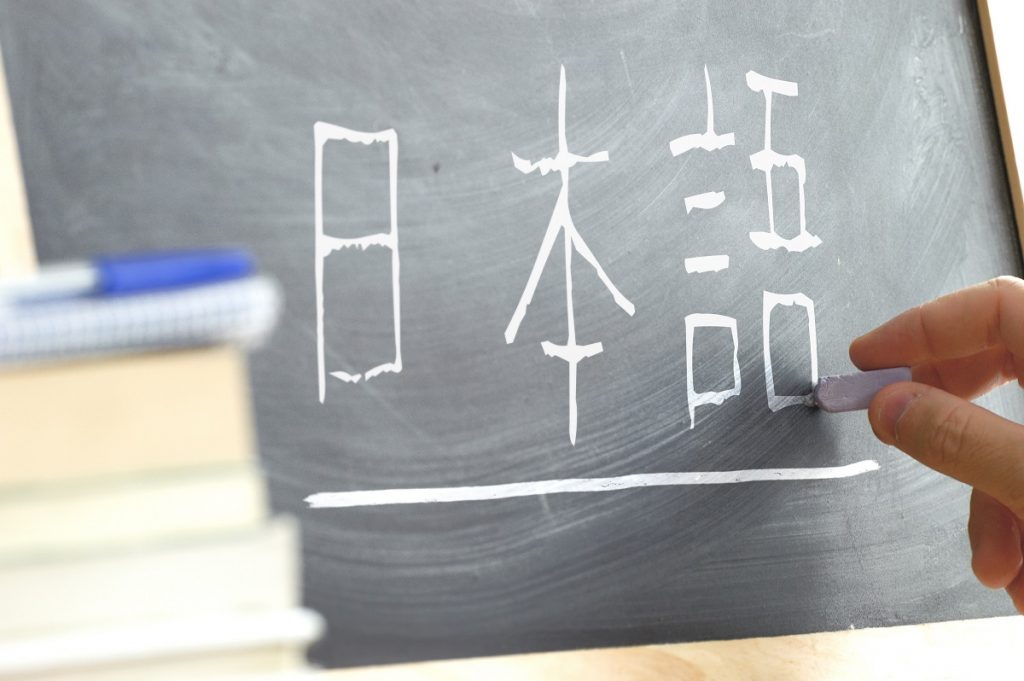The Foreign Services Institute, which trains US diplomats in foreign languages from scratch, classifies Japanese as a “super difficult” language. Their estimate is that it takes 2,200 class hours (not even including separate study hours!) to become fluent in Japanese. They even rank Japanese as the hardest language for native English speakers, beating out Chinese and Arabic. This can sound pretty daunting, but getting past the challenges is part of what makes learning a new language so exciting and satisfying!
Let’s break down the trickiest aspects of learning Japanese.

1. Japanese Uses 4 Methods of Writing
Japanese doesn’t use one “alphabet” for its writing system. Instead, it has four different forms of writing. Two of the Japanese writing systems are syllabaries. A syllabary is a group of written characters that represent syllables in words, rather than individual letters. Unlike the Latin alphabet and other languages like German or Russian, Japanese has syllabaries rather than a letter-based alphabet. It also has a form of writing borrowed from Chinese and an English-ized method of sounding out words.
Here’s a breakdown of the four different Japanese writing styles:
漢字 (かんじ) — kanji
Kanji is essentially the OG writing system of Japan. Kanji characters are based on Chinese characters and are often almost identical to their partner words in Chinese.
This writing system is one of the most difficult parts of Japanese to learn, as there are over 2,000 different characters to learn and many kanji have several different readings.
With practice, though, anyone can master kanji! Take it one step at a time and learn kanji as you learn new vocabulary. You’ll build up your knowledge of the writing system faster than you’d expect.
ひらがな — hiragana
Hiragana is a syllabary that breaks words down into individual symbols that sound out a particular syllable. For example, each of these characters represent a specific sound: ひ (“hi”), ら (“ra”), が (“ga”) and な (“na”). Together, they spell ひらがな (hiragana).
カタカナ — katakana
Katakana is a syllabary that’s used when trying to pronounce something from another language as well as for a few other things like sound effects. Japanese often takes English words like “hamburger” (as well as words from other languages), and turns them into a Japanese-ified word. Katakana is used for these borrowed words, turning “hamburger” into ハンバーガー (はんばーがー) — hanbāgā.
ローマ字 — rōmaji
Rōmaji is the easy one. It’s simply the romanized reading of a Japanese word. Non-Japanese speakers and readers use rōmaji to understand how to properly pronounce words. It’s written using English letters, so there’s nothing to learn there!
It can be confusing to deal with a whole different way of writing, but learning all of the Japanese forms of writing is definitely doable! Just start with the syllabaries and pick up kanji along the way.
2. Japanese Grammar Is Very Different From English Grammar
Grammar is the backbone of any language. It dictates sentence structure, word order and can drastically change the meaning of a sentence when used incorrectly. Japanese and English use a significantly different sentence order, which may present a problem for learners trying to grasp the Japanese language.
Japanese grammar contains a Subject-Object-Verb word order (as opposed to English’s Subject-Verb-Object order). So a simple sentence like “I go to the park” in English would translate roughly like this in Japanese: “I park to go.” You also need to remember that nouns always come before prepositions and adjectives always come before the noun they describe. In addition to the word order, using the correct Japanese particle can be a challenge for beginners, as well—particles are used to denote subjects, motion, object, questions and more and can be tough to master.
In this sense, Japanese grammar is a bit more complicated than English grammar. Grammar is almost always a roadblock for newbies learning Japanese, but just like anything worth learning, there are going to be challenges! And here’s the good news: Japanese only has a past and nonpast tense, categorised into just five different verb forms. We’d say that’s a vast improvement over English’s 12 different tenses!
3. Japanese Is Spoken Very Quickly
A 2015 study found that Japanese is the fastest-spoken language in the world. English is spoken significantly slower, which could present an issue for learners who aren’t used to processing a language so quickly.
On the other hand, Japanese sentences have a very low information density, which means that it takes many syllables to express a simple concept. However, with a bit of time and speech practice, I bet you’ll be able to catch up!
Japanese takes a lot of time and effort to learn, but what’s less well-known is that there are many aspects of it that are easy. For example, you already know a lot of Japanese words, such as 絵文字 (えもじ) — emoji and 寿司 (すし) — sushi, and it also uses plenty of English words like アイスクリーム (aisu kurīmu). Unlike Mandarin Chinese and some other Asian languages, Japanese doesn’t have tones either!
Now that you know all of this, are you ready to take on learning Japanese? Learning any new language can be a challenging experience, but it can also be fun and life-changing. Good luck!










